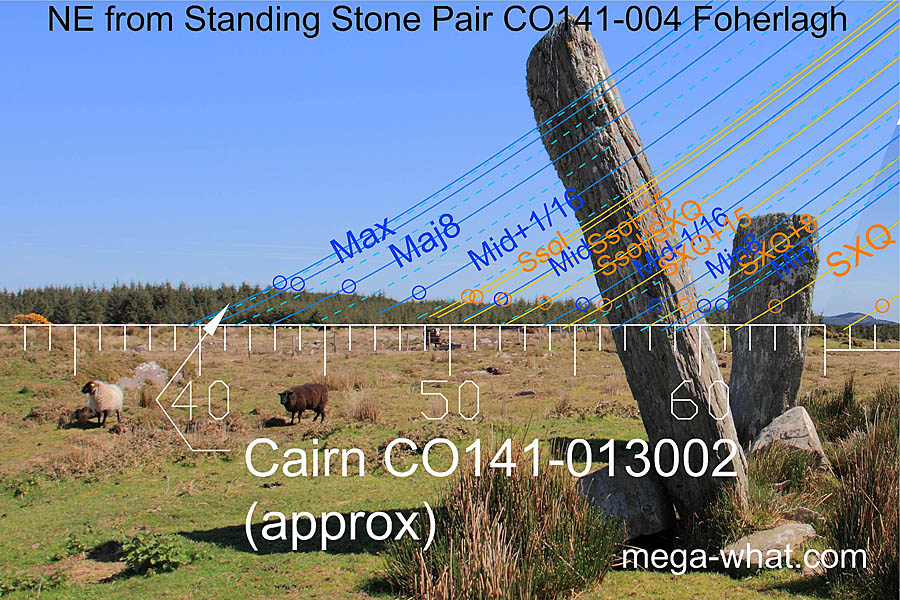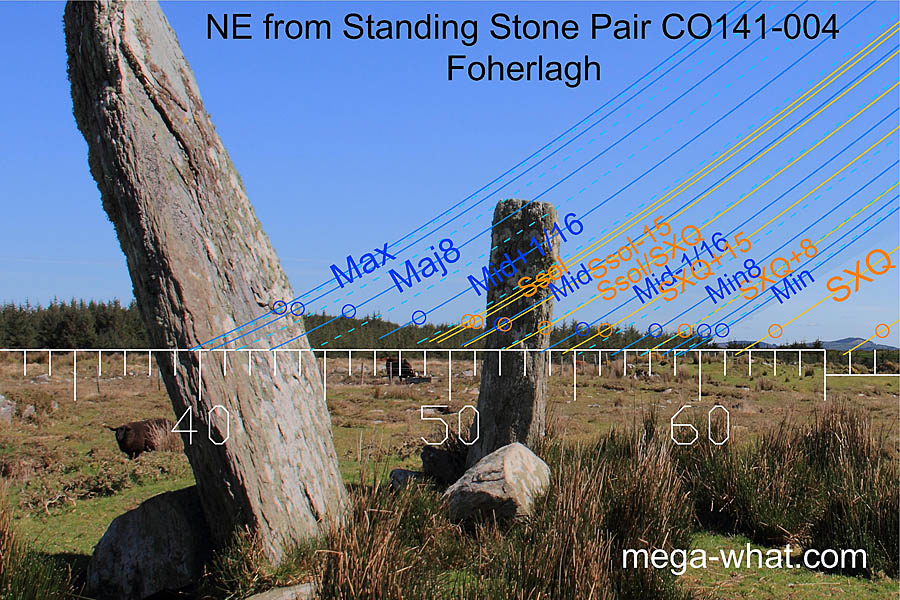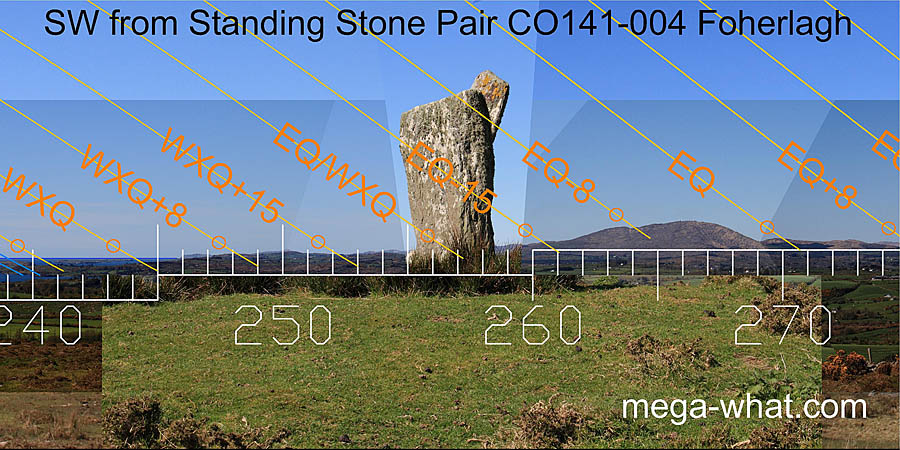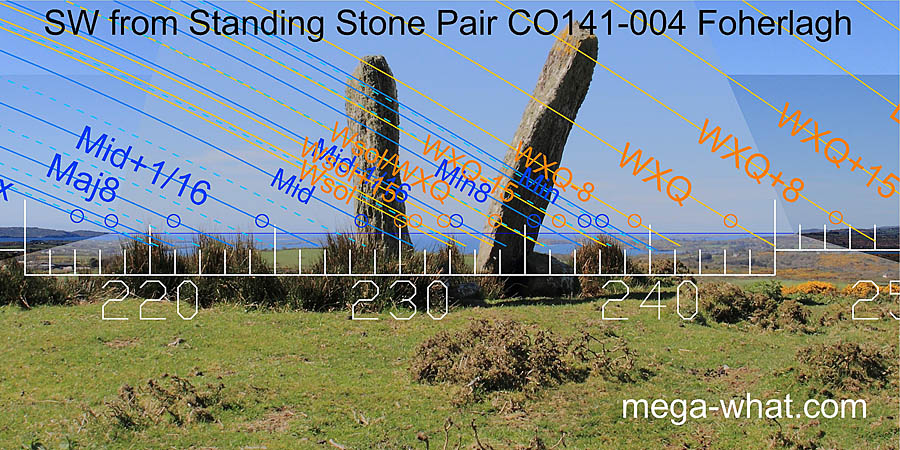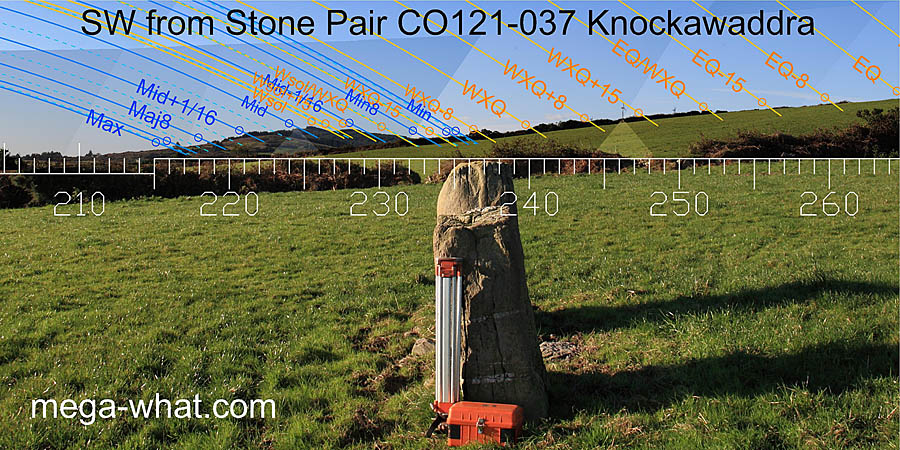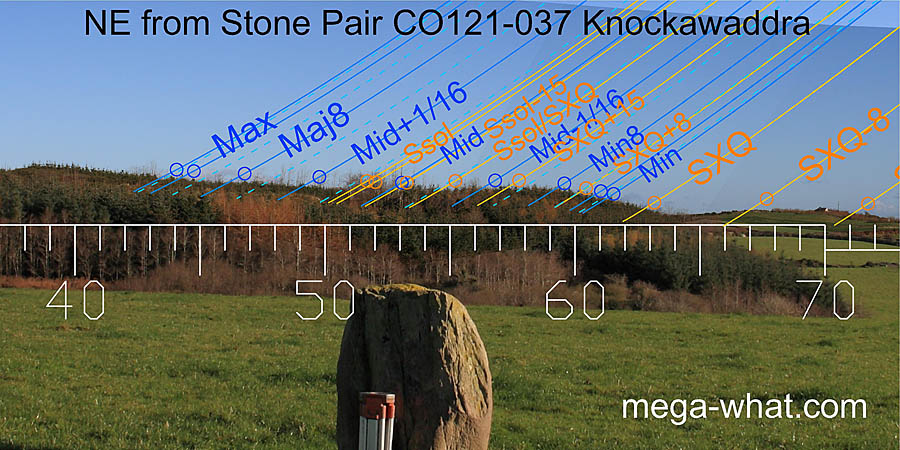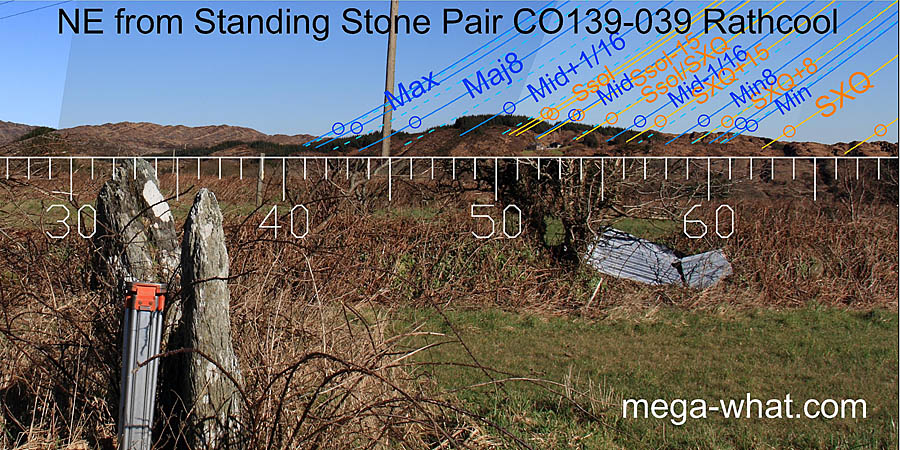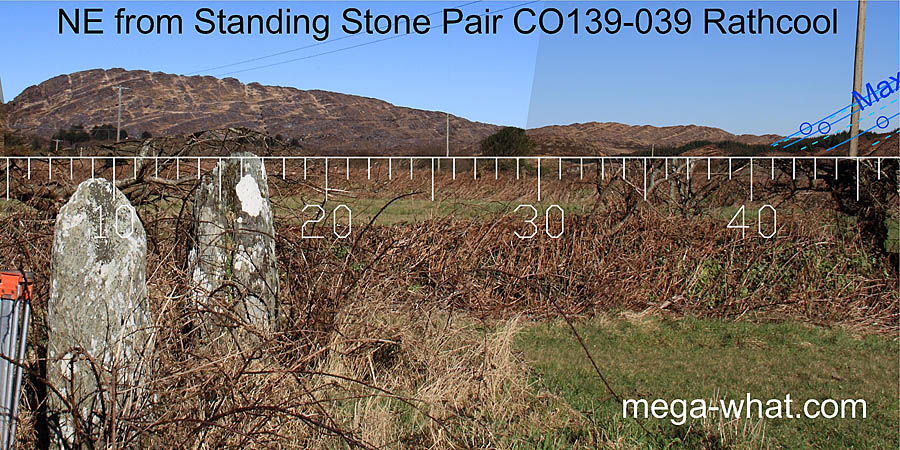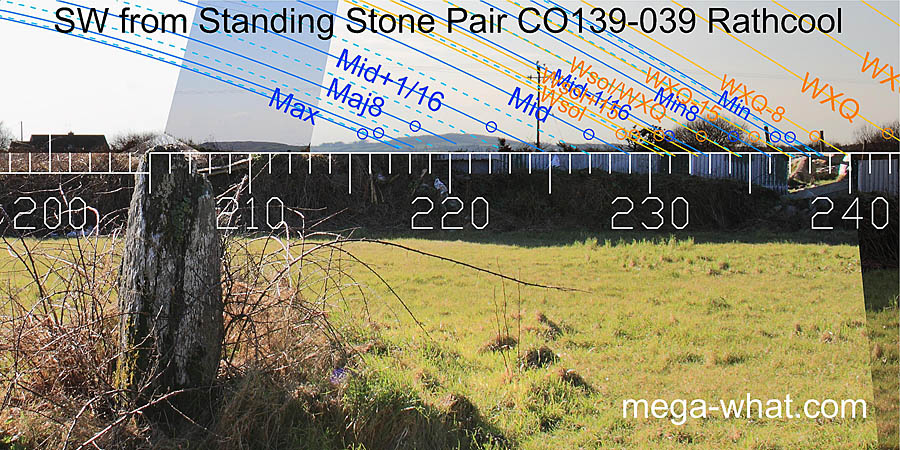mega-what / axial alignments
Standing Stone Pairs
Tap/Click pics for big ones, names for site pages. Prehistoric luni-solar trajectories.
Axial alignments of 22 surveyed Standing Stone Pairs.
Sorted by: Location Name | Alignment Class
These standing stone pairs are a mixture of Cork-Kerry type Irish ones and Welsh ones.
- For classification purposes these surveyed horizons have been divided into a small number of zones.
This classification is an overall one that considers all axes to be potentially bi-directional.
- Extreme is where sun and moon never rise or set but excludes the north-south axis of celestial rotation.
- Lunar is where lunistices
Lunistices are the most northerly and southerly moons of the month. The lunar equivalent of solstices. More.
occur but sun rises or sets do not.
- Solar is where sun rises or sets occur but lunistices do not.
- Solar / Lunar is where a lunistice zone overlaps with the outer regions of the sun's annual travels.
Alternatively one direction may be purely solar while the other is somewhere within a lunistice range.
- Note that these terms may well have other uses elsewhere.
Axial Alignment Classes of surveyed stone pairs
| Type | Number | %
|
|---|
| Solar | 4 | 18
|
| Solar / Lunar | 9 | 41
|
| Lunar | 3 | 14
|
| Extreme | 6 | 27
|
| North-South | - | -
|
| All | 22 | 100
|
- This sample contains 4 Welsh sites and there is one in each class.
- The 18 Cork-Kerry type stone pairs represent c.17% of known examples.
- There are more solar ones than lunar ones but by far the largest group point to the zone of solar / lunar overlap.
- Over a quarter of them have extreme axes which is a much higher proportion than any other monument type.
The only ones anywhere close are boulder-burials.
Of this sample (excluding the six with extreme axes), five are uni-directional and eleven are bi-directional.
See for yourself:
- Orange Solar trajectories split the tropical year into 48 "Tweeks" (7.6 day mean) that are better regarded as quarter-months.
- Solid Blue Lunar lines split cyclical lunistice position variation into 16 periods of about 14 months each.
- Lunistices are the most northerly and southerly moons of the month [More].
- Also see Technical Notes on the Pictures
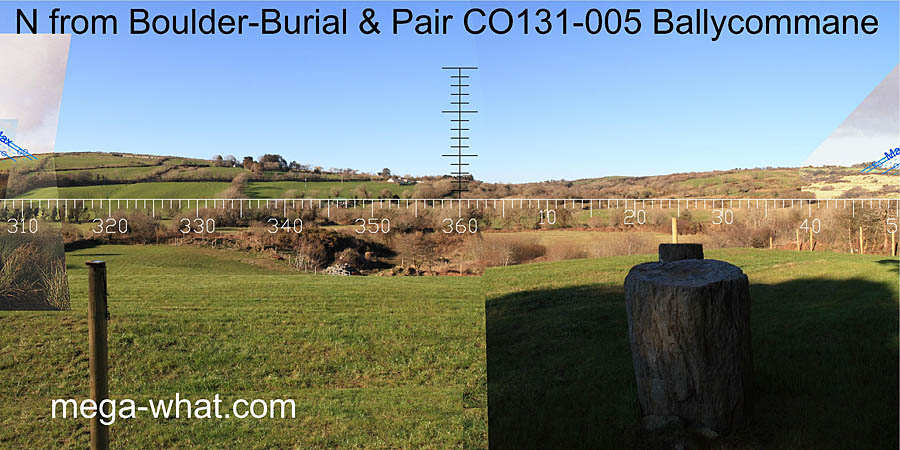
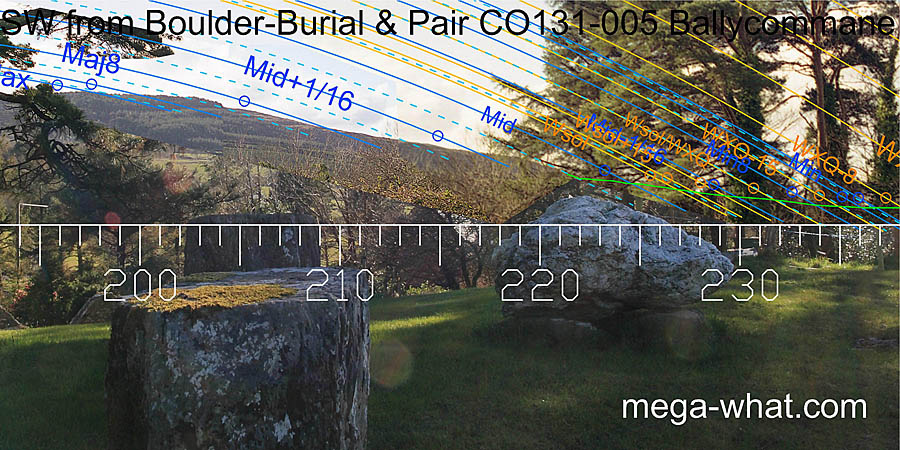 Ballycommane Stone Pair (& Boulder-Burial)
Ballycommane Stone Pair (& Boulder-Burial):
The axis of this stone pair roughly bisects the space between north and north-eastern major standstill.
To the south-west, lunar major eighth is indicated. The boulder-burial is harder to interpret but may well indicate lunar mid cycle to the south-west while being slightly beyond major standstill to the north-east.

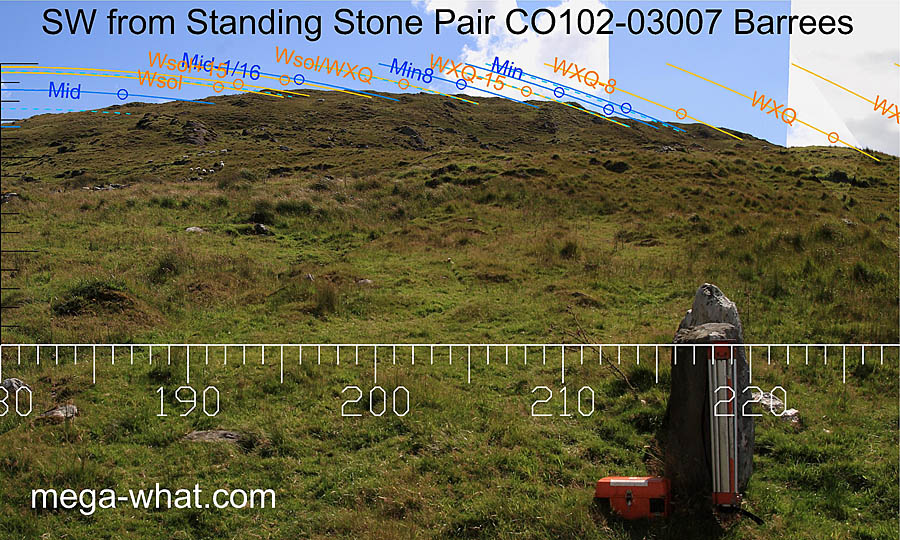 Barrees Standing Stone Pair
Barrees Standing Stone Pair:
Excavated and restored. The reverse axis indicates major standstill. The south-western axis indicates WXQ-8, a quarter-month south of winter cross-quarters, the solar delimiter for the lunistice range.
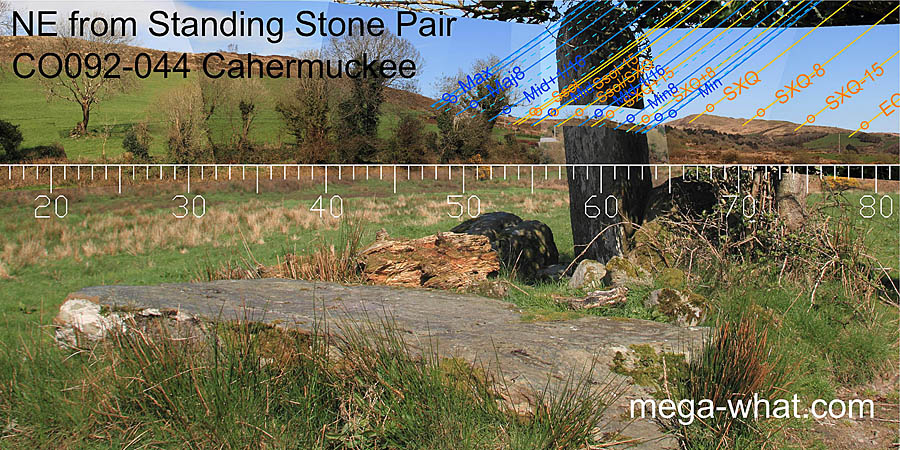
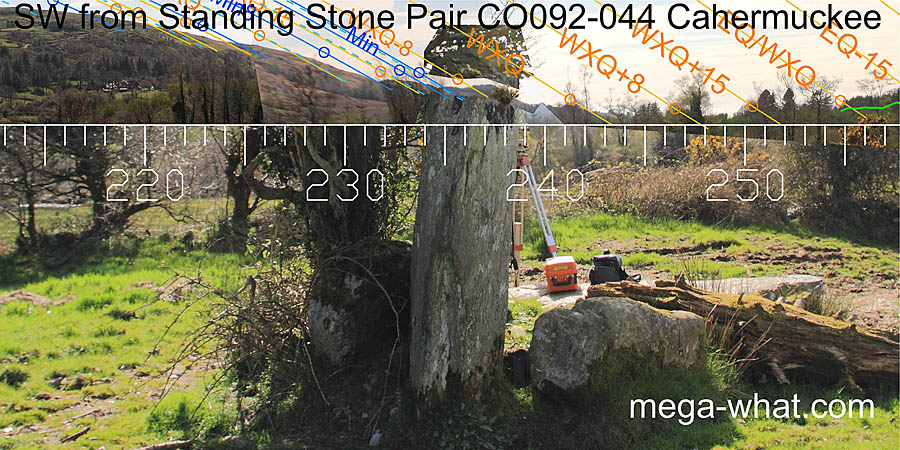 Cahermuckee Stone Pair
Cahermuckee Stone Pair:
One leaning stone remains. To the north-east it indicates the minor half of the lunistice range.
To the south-west it is more towards minor standstill and the winter cross-quarters.
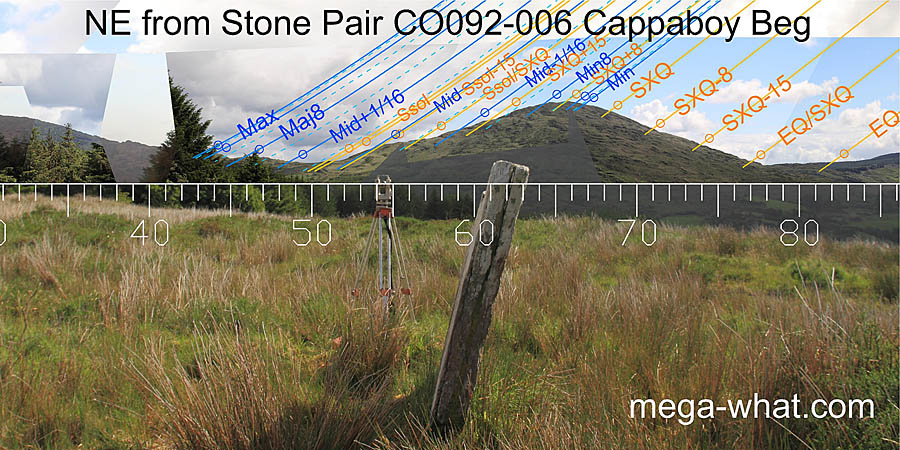
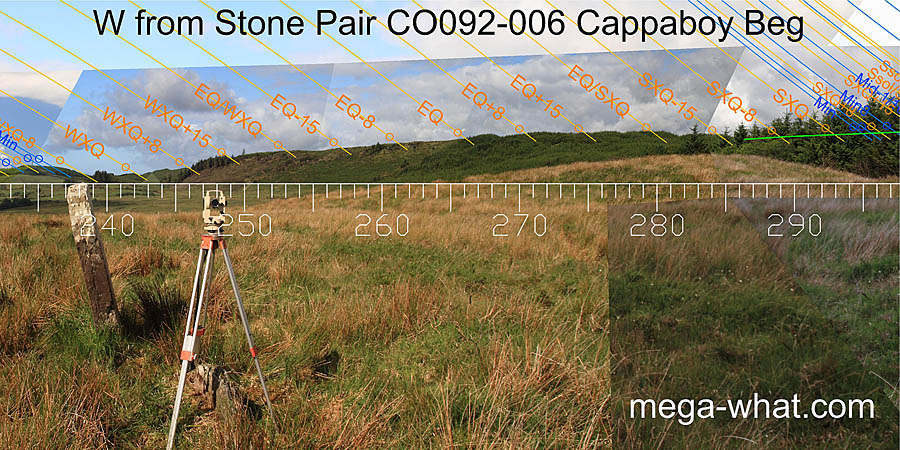 Cappaboy Standing Stone Pair
Cappaboy Standing Stone Pair:
The two stones have markedly different axes, one is a broken stub.
To the north-east, the pair axis is solstitial with the western stone a half-month or so from it.
To the south-west, the western stone points towards the winter cross-quarters while the pair axis is more towards minor standstill.

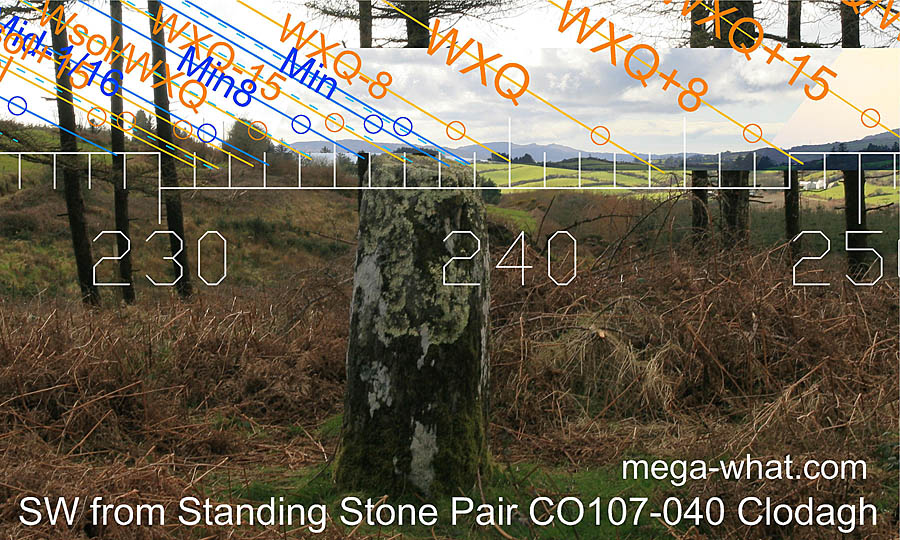 Clodagh Standing Stone Pair
Clodagh Standing Stone Pair:
The primary axis to the north-east is towards the minor half of the lunistice range, as far as the summer solstice.
The reverse indicates lunar minor standstill, which would culminate at summer solstice full moon.

 Clodagh Stone Circle & Pair
Clodagh Stone Circle & Pair:
The pair axis of c.217° indicates the limits of a month centred on winter solstice to the south-west but is beyond major standstill to the north-east.
The circle axis indicates summer solstice to the north-east and maybe solstice / equinox midpoint to the south-west.

 Coolcoulaghta Standing Stone Pair
Coolcoulaghta Standing Stone Pair:
Removed and then re-erected by archaeologists using a pre-existing plan.
The primary south-western axis is half-way between equinox and winter cross-quarters.
The reverse is towards summer cross-quarter at the intersect of local further ground.
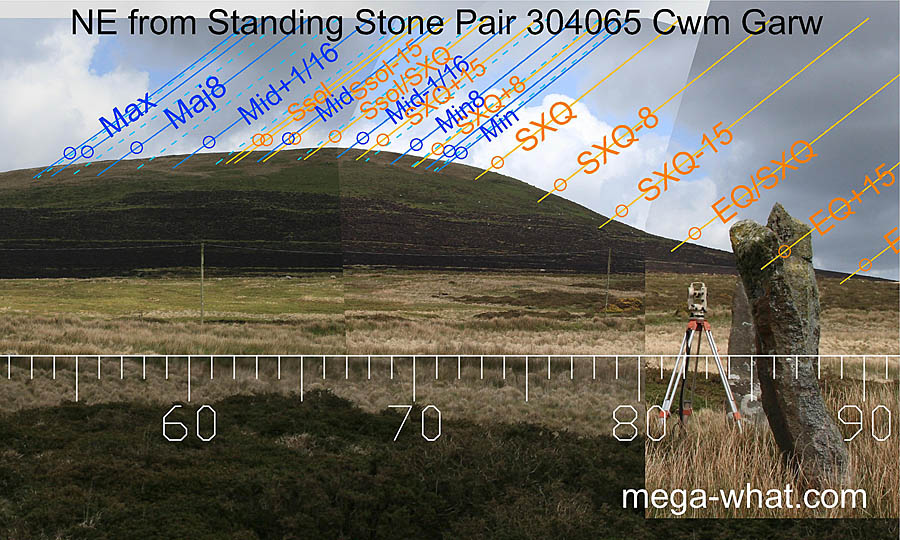
 Cwm Garw Standing Stone Pair
Cwm Garw Standing Stone Pair:
The primary axis is to the north-east but the smaller stone is leaning badly.
Nonetheless, it is roughly half-way between the equinox and summer cross-quarters.
To the south-west the reverse is about a week on the summer side of the equinox.

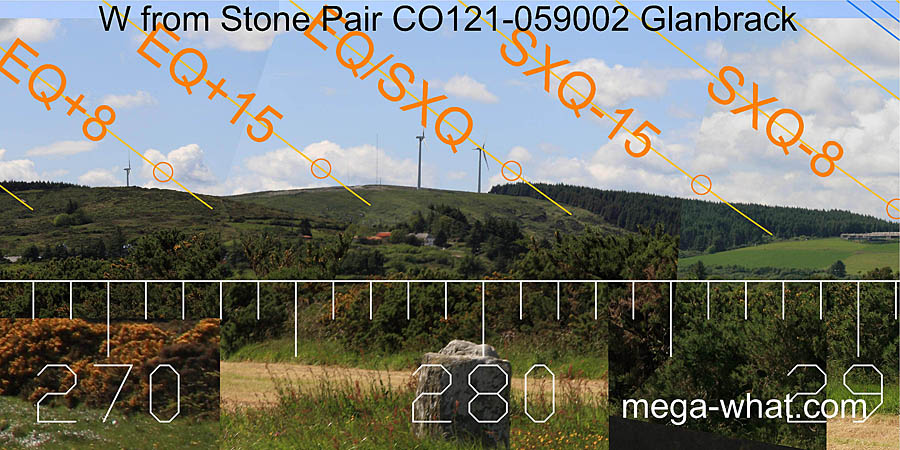 Glanbrack Stone Pair
Glanbrack Stone Pair:
Anomalous because the stones are more or less perpendicular to the row axis. Survey was primarily from the adjacent circle.
The south-eastern axis is about a half-month south of the equinox while
the north-western one is possibly equinox / cross-quarter midpoint as this horizon was surveyed was from some metres further east.
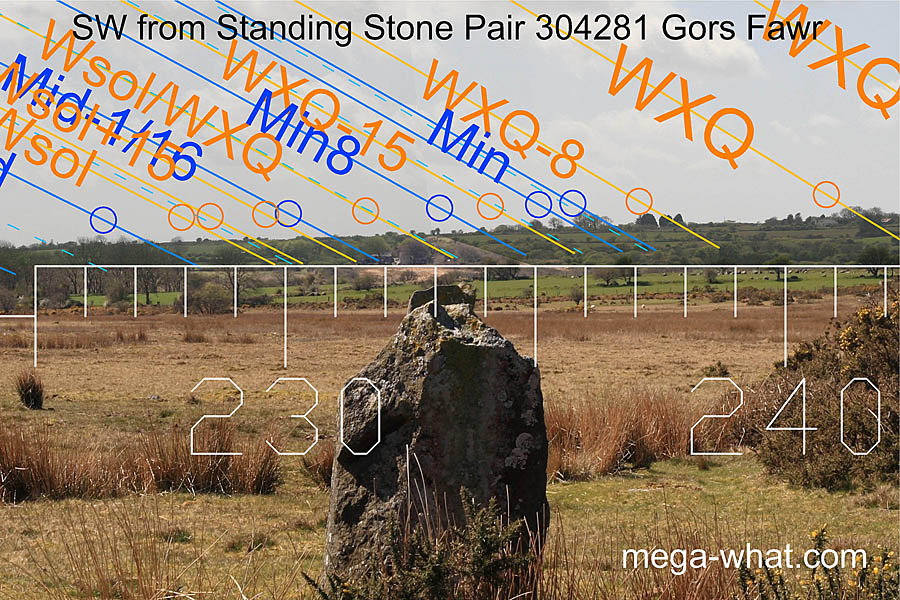
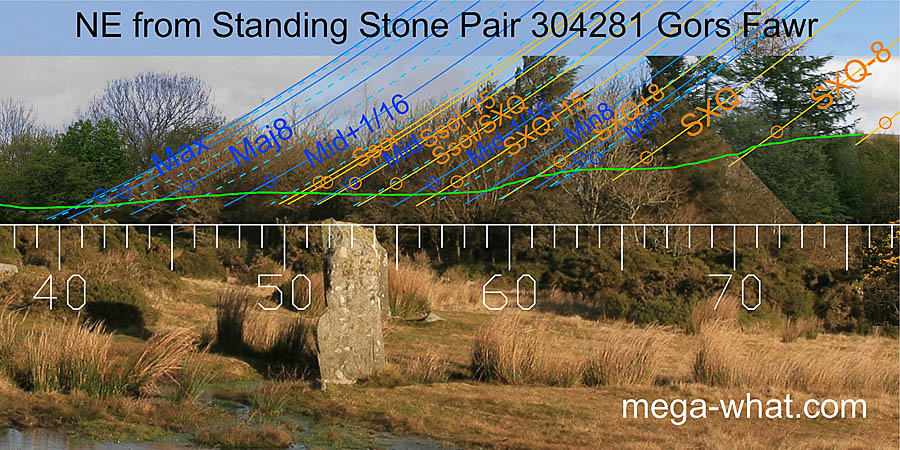 Gors Fawr Standing Stone Pair
Gors Fawr Standing Stone Pair:
The south-west axis points at the lunar minor eighth and / or the solstice / cross-quarter midpoint.
The north-east axis seems to indicate lunar mid-cycle and the limits of a month centred on the solstice but could also mark the solar points to either side of that.
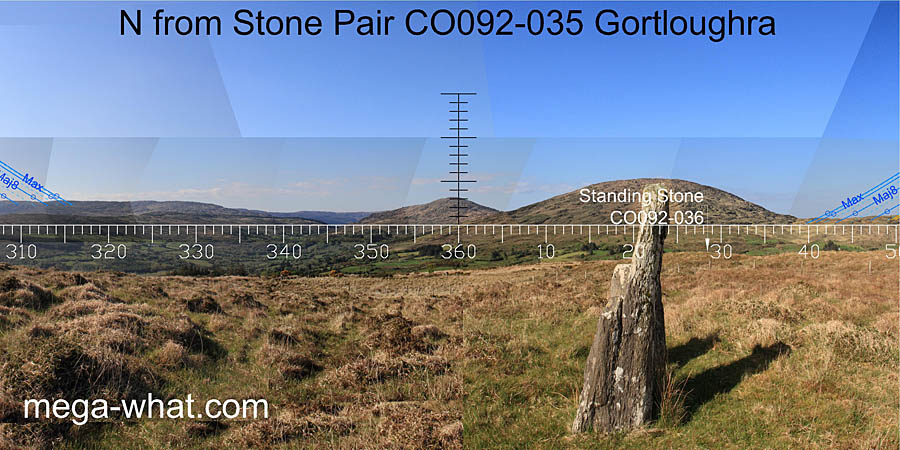
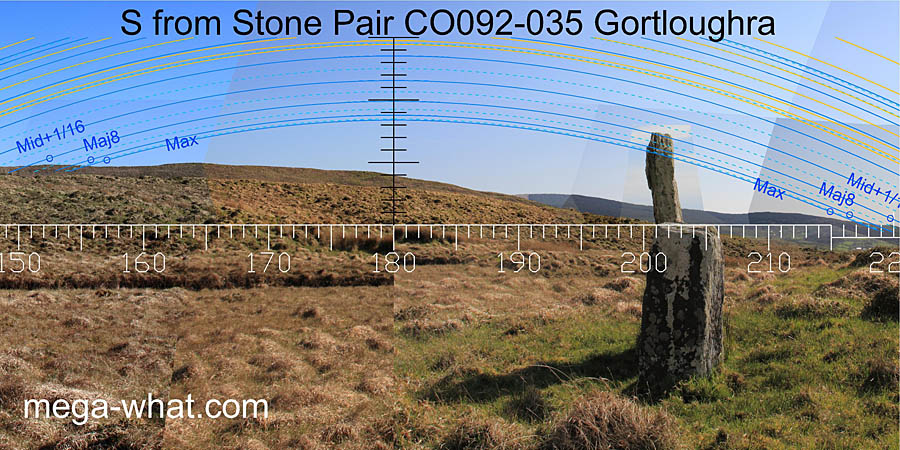 Gortloughra Stone Pair
Gortloughra Stone Pair:
The pair axis is about 20° clockwise of north-south, which
roughly bisects the spaces between north-south and the major standstills in both directions.
The smaller stone is set so that it indicates significant events in all four directions.
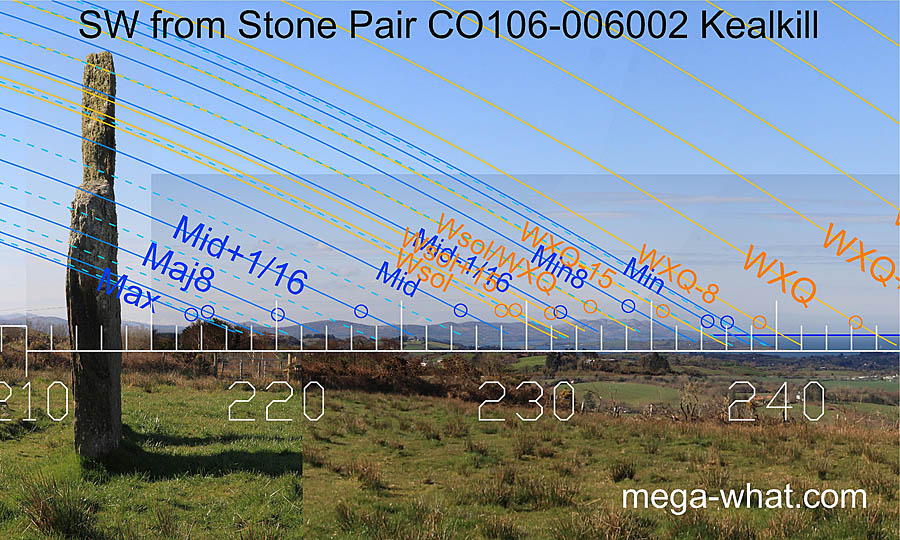
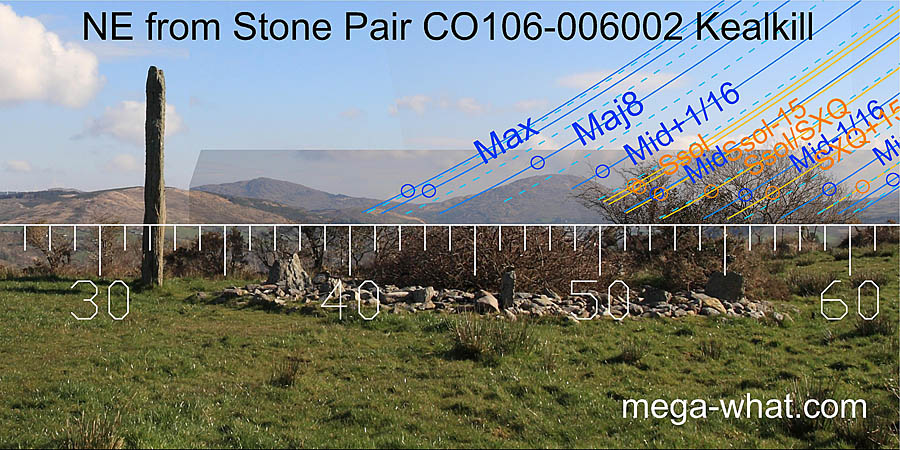 Kealkill Stone Pair
Kealkill Stone Pair:
The axis is beyond major standstill in both directions, though only just so to the south-west.
Also bear in mind that these axial pics of the row have been applied to horizons surveyed from the circle which is a few metres further north.
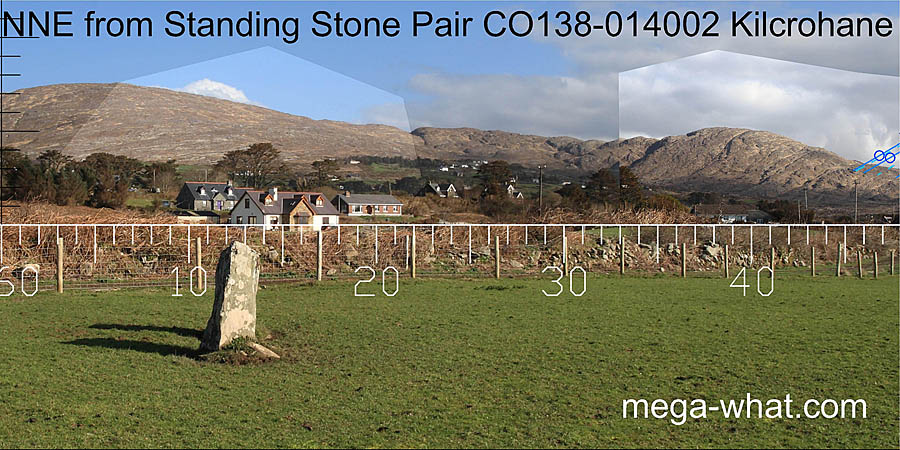
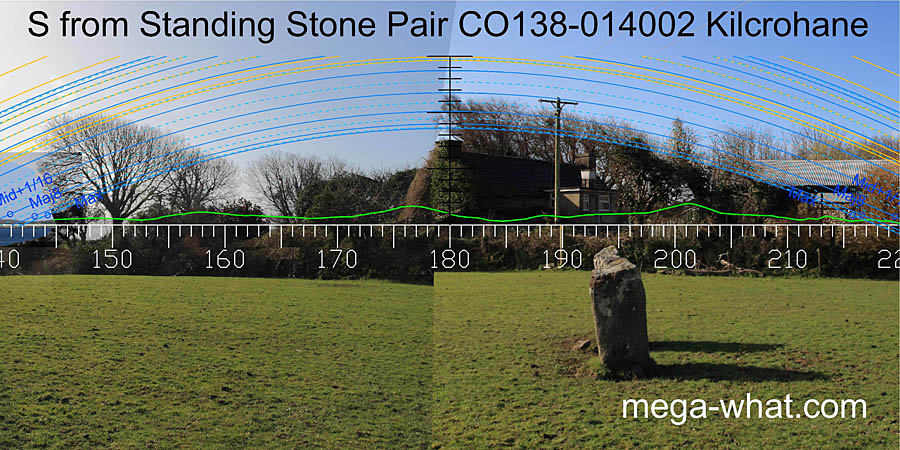 Kilcrohane Standing Stone Pair
Kilcrohane Standing Stone Pair:
The larger stone is to the north-east and the pair axis is about 13° clockwise of north-south.
It is a good bit further than that from the major standstills but more so to the north.

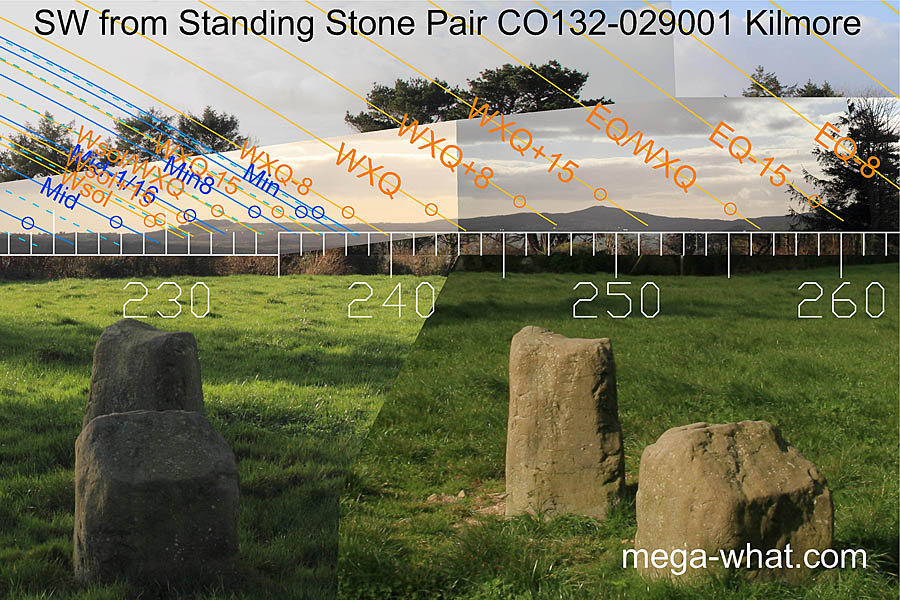 Kilmore Standing Stone Pair
Kilmore Standing Stone Pair:
The pair axis is generally solstitial in both directions but the axis of the south-west stone is radically different.
It spans the week south of the summer cross-quarters and the period one to two weeks north of the winter cross-quarters.

 Knocknakilla Stone Pair
Knocknakilla Stone Pair:
The circle axis indicates major standstill to the south-west, the reverse is beyond it.
It looks like the standing stone pair, which was probably there first, was essentially the same but one stone is fallen and the other is leaning.
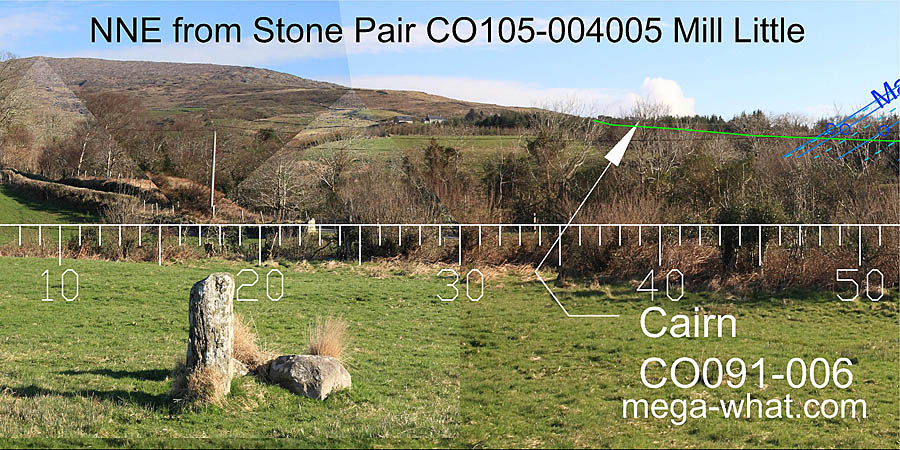
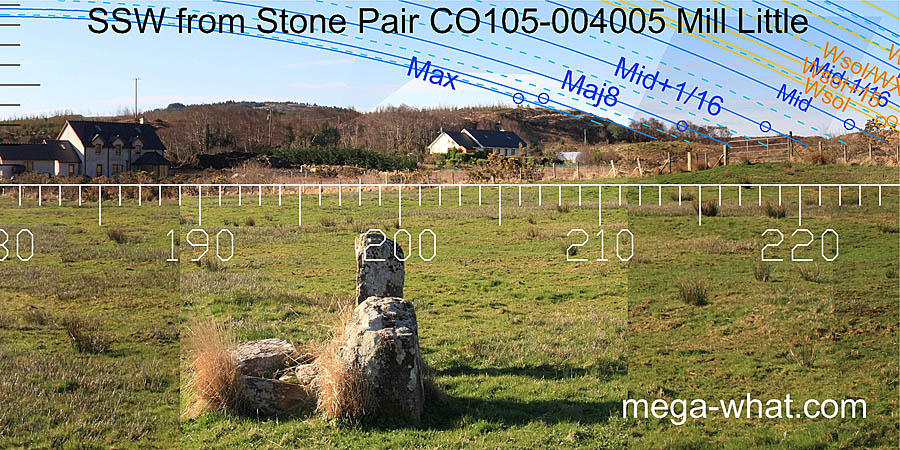 Mill Little Standing Stone Pair
Mill Little Standing Stone Pair:
The stones are in-line and the axis is about 18° clockwise of north-south.
This less than bisects the space between north and the major standstill but
more than bisects the space between south and the major standstill.
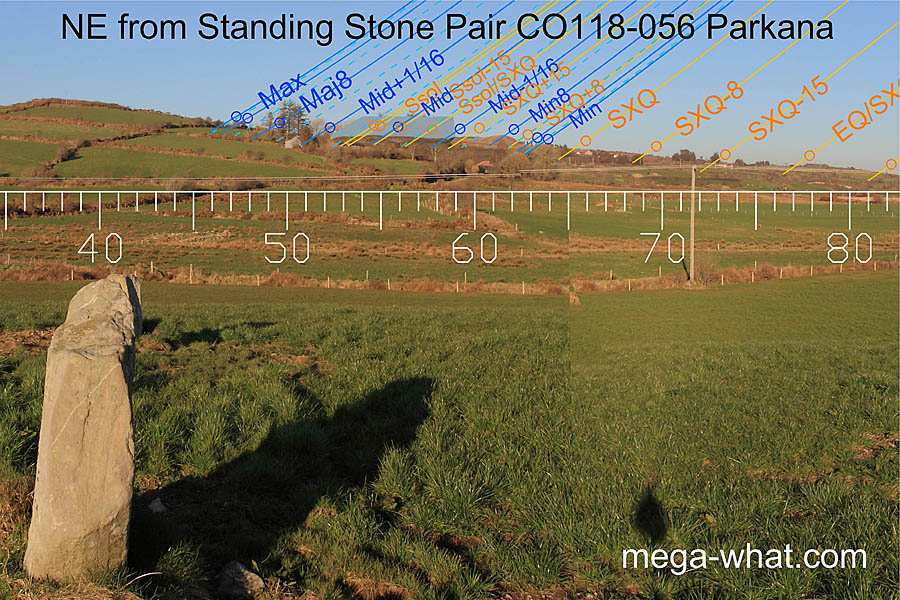
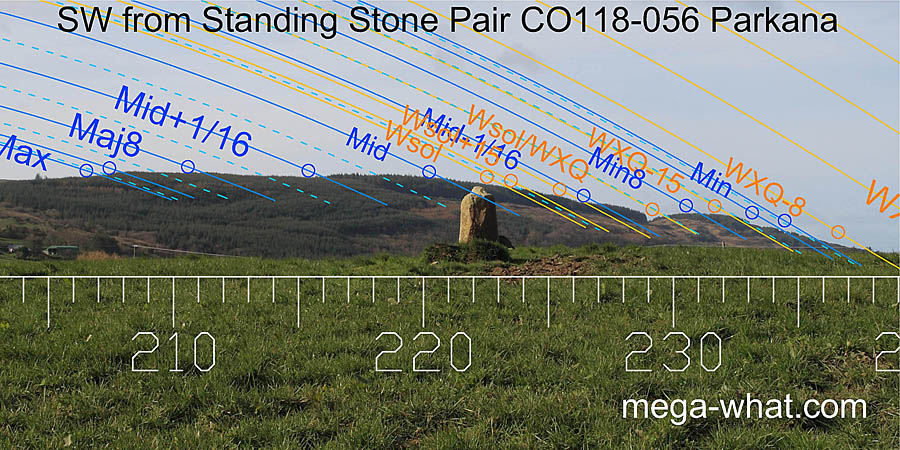 Parkana Anomalous Stone Pair
Parkana Anomalous Stone Pair:
Anomalous because of the distance between them, the axis of these in-line stones is beyond major standstill to the north-east.
To the south-west they function as a sight, indicating winter solstice / lunar mid-cycle on a smooth horizon.
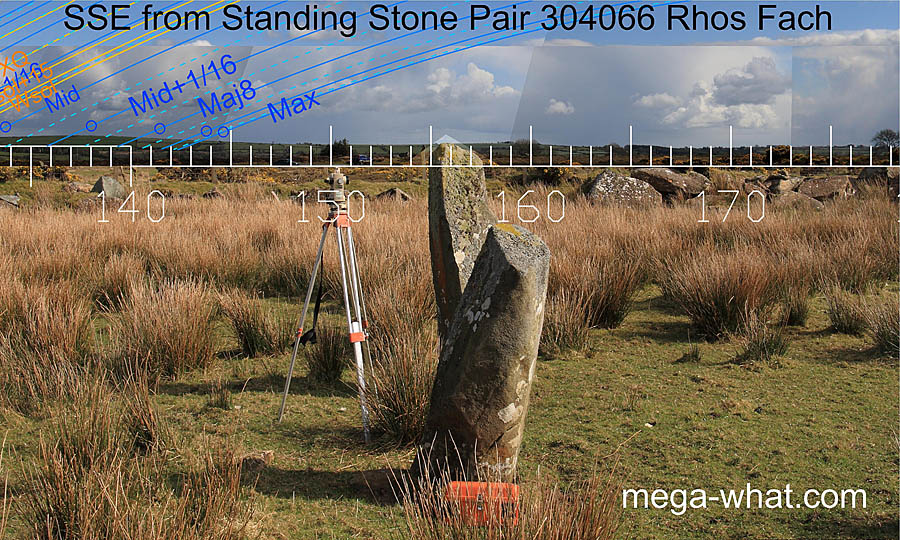
 Rhos Fach Standing Stone Pair
Rhos Fach Standing Stone Pair:
These two are leaning and there may once have been a third.
The north-west axial alignment roughly bisects the space between north and major standstill.
The south-eastern line is closer to the standstill.
The southern stone's axis indicates north-east major standstill
[Pic].
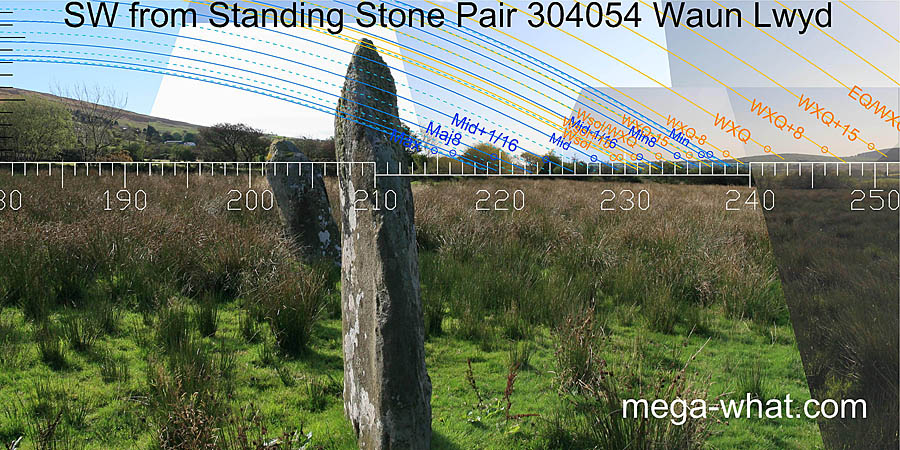
 Waun Lwyd Standing Stone Pair
Waun Lwyd Standing Stone Pair:
The south-western axis is a few degrees beyond major standstill. The north-eastern one is well beyond it but compensate for the leaning stone and it might be somewhere close to bisecting the space.
Dolaumaen Standing Stone is visible on the south-eastern horizon in a significant position
[Pic].
© Michael Wilson.

















